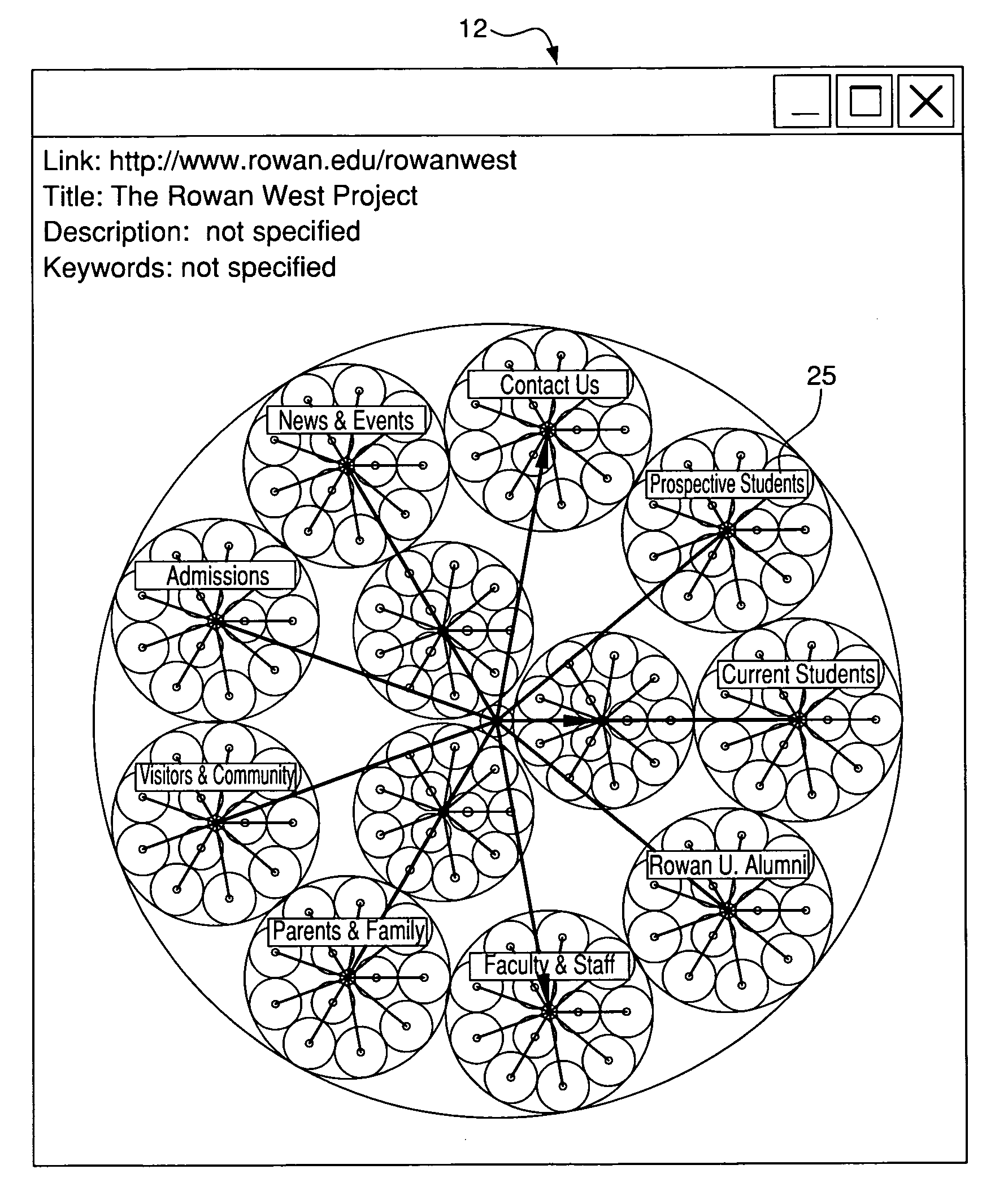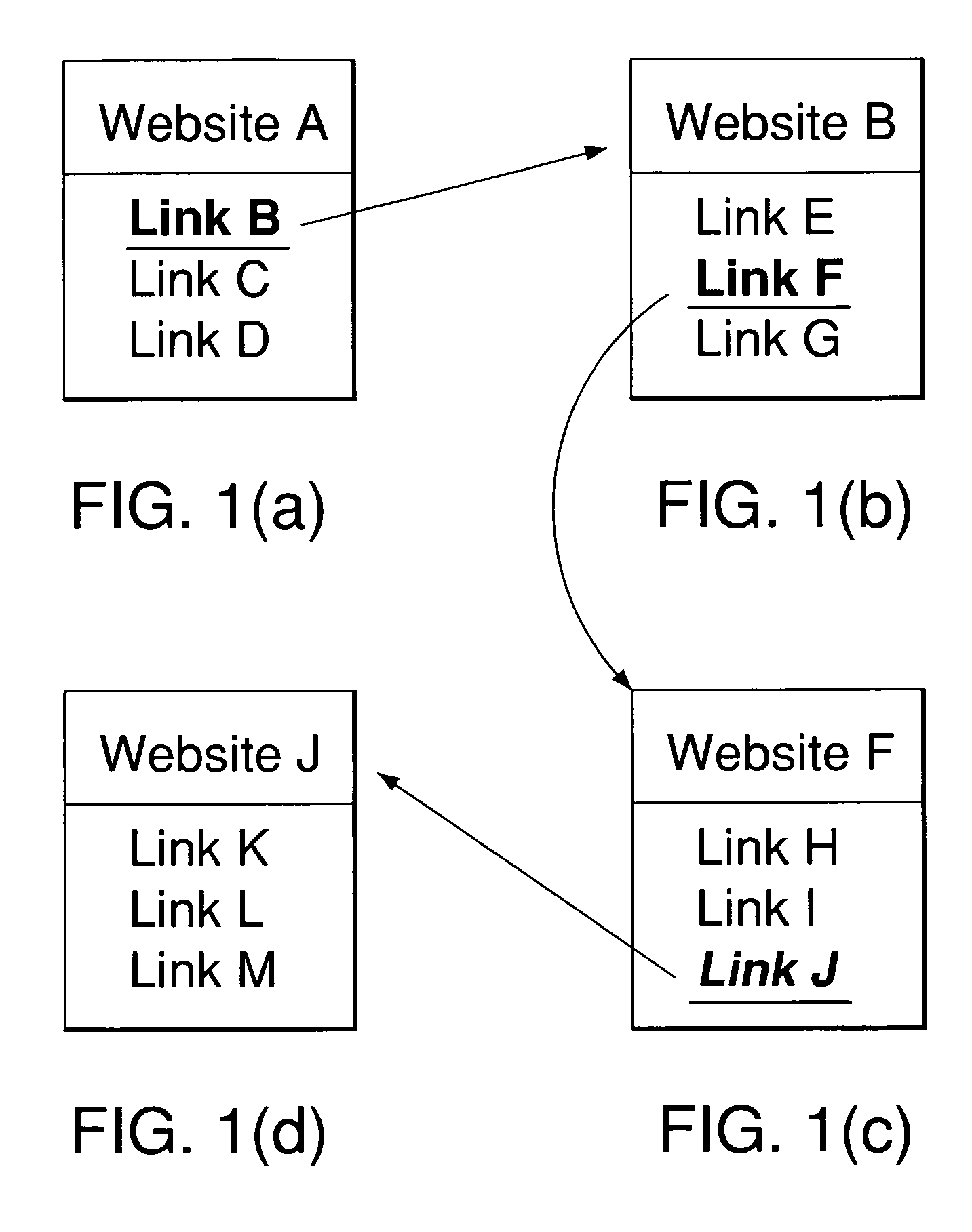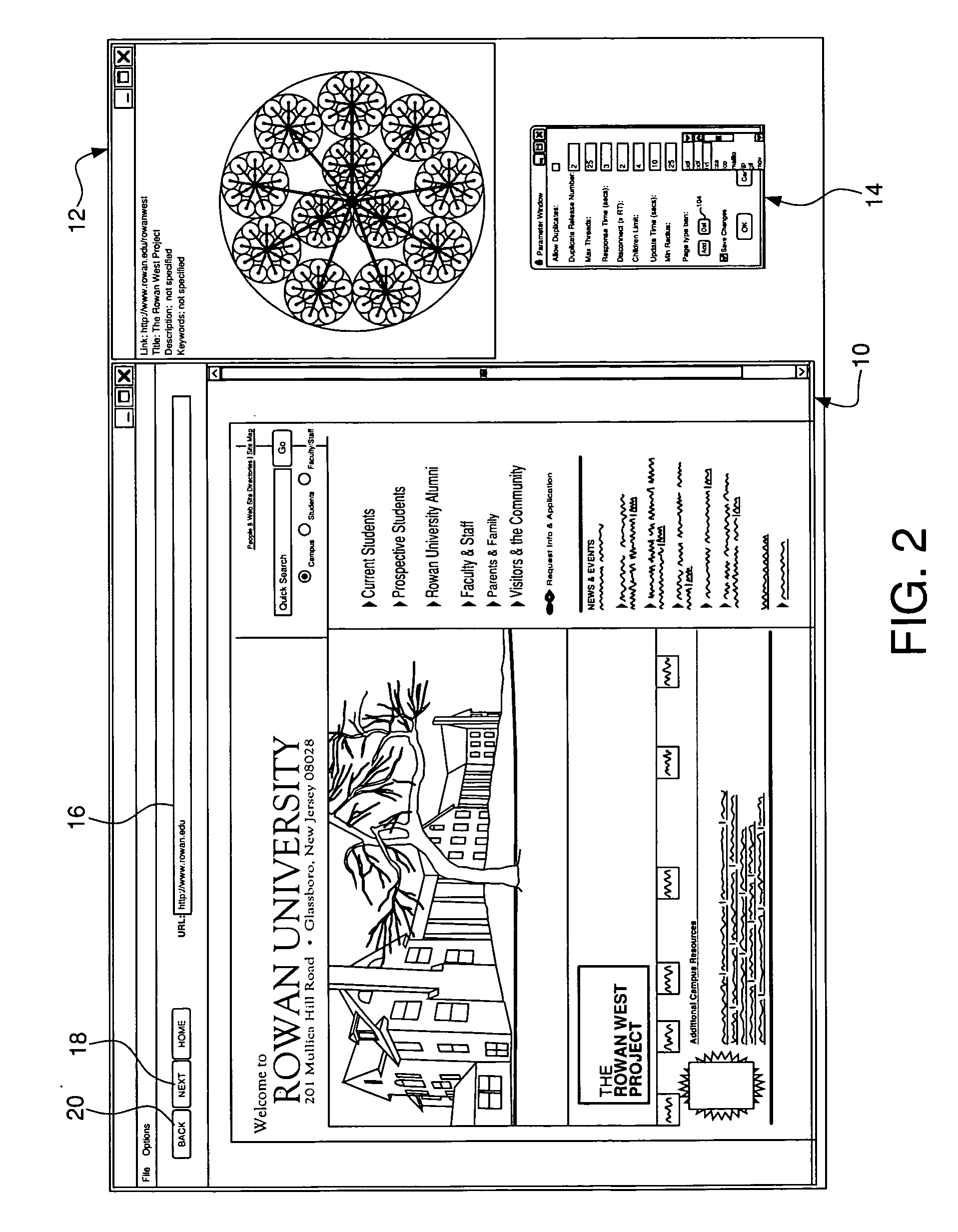Information visualization system
a tree-based information and visualization technology, applied in the field of tree-based information visualization systems, can solve the problems of not knowing where you are, questionable extent to which it constitutes a readily navigable space in the everyday sense of the word, web navigation, etc., and achieve the effect of facilitating perception of relational information, simple structure and convenient display
- Summary
- Abstract
- Description
- Claims
- Application Information
AI Technical Summary
Benefits of technology
Problems solved by technology
Method used
Image
Examples
Embodiment Construction
[0047]Ordinary Internet users often get lost in cyberspace because they have no idea what to expect as they traverse the space (i.e., they have no spatial context as they move about the Web). In addition, there does not exist a consistent, standard methodology for organizing distinct Websites. Consequently, users of the Web suffer from information overload because they have the option of too many Web pages to visit. As seen in FIGS. 1(a)-1(d) a typical “lost in cyberspace” scenario could be as simple as the following: a user, while browsing the Web, proceeds from Website A (FIG. 1(a)) when finding an interesting link to Website B (FIG. 1(b)). While at Website B, the user finds another interesting link. This takes the user to Website F (FIG. 1(c)) where the user browses and chooses another link that leads the user to Website J (FIG. 1(d)). At this point, the user wants to go back to where she started and wonders where she was when she originally started browsing. The user can use the...
PUM
 Login to View More
Login to View More Abstract
Description
Claims
Application Information
 Login to View More
Login to View More - R&D
- Intellectual Property
- Life Sciences
- Materials
- Tech Scout
- Unparalleled Data Quality
- Higher Quality Content
- 60% Fewer Hallucinations
Browse by: Latest US Patents, China's latest patents, Technical Efficacy Thesaurus, Application Domain, Technology Topic, Popular Technical Reports.
© 2025 PatSnap. All rights reserved.Legal|Privacy policy|Modern Slavery Act Transparency Statement|Sitemap|About US| Contact US: help@patsnap.com



